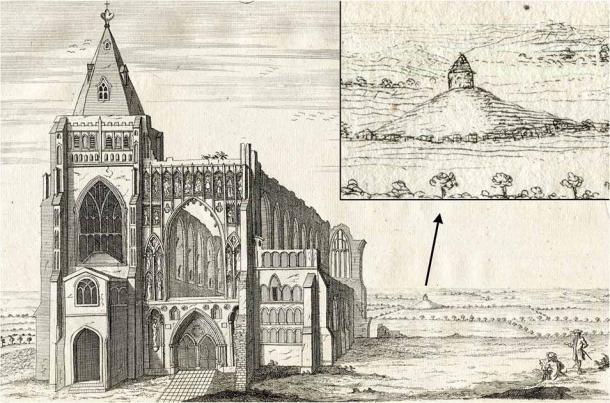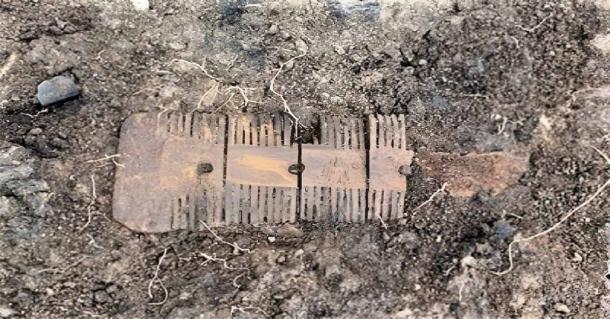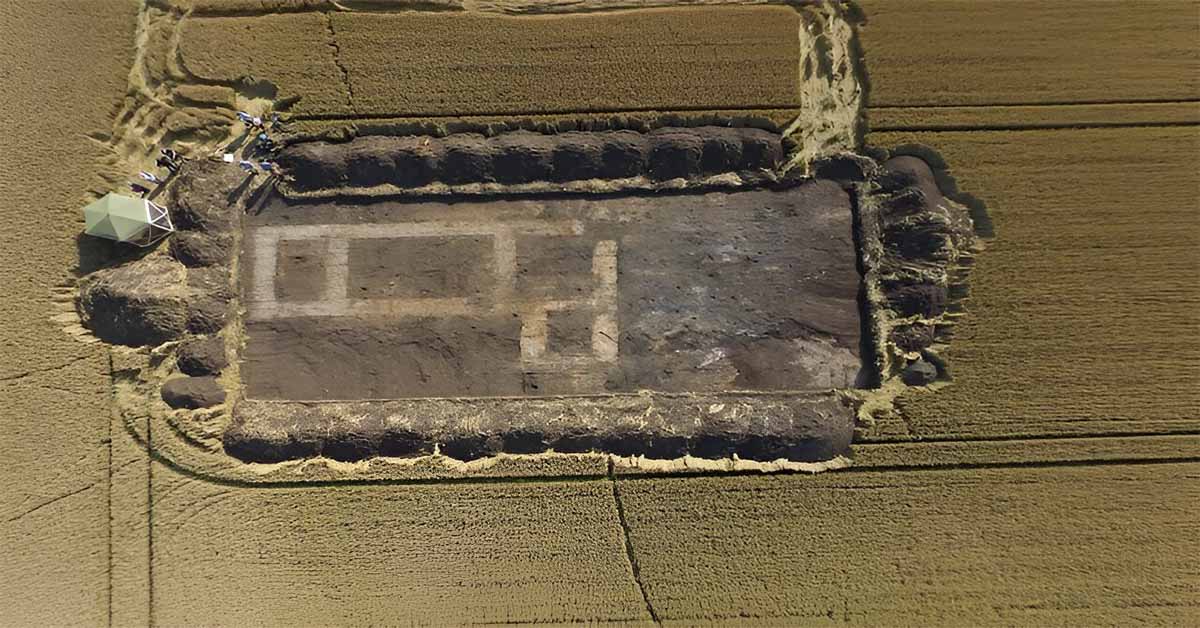Archaeologists from Newcastle University have been working for years in Crowland, Lincolnshire around the purported site of the hermitage of Saint Guthlac, a local cult figure. What they found there reveals a far older and more complex sacred landscape, one that dates back to the Neolithic.
Crowland is best known today for the ruins of its enormous medieval abbey, which was founded in part to honor the saint. Saint Guthlac, who died in the year 714, had been a hugely popular figure when he was alive, and after his death a cult arose in his name and the location became popular with pilgrims.
It had always been said that Guthlac had created his hermitage from a plundered barrow or burial mound. New evidence suggests there is some truth to the story, but that Guthlac in fact occupied an enormous henge, a relic from the Stone Age.
Crowland Gives up its Secrets
The location of Guthlac’s hermitage has long been suspected to be in the area around Anchor Church Field in Crowland. However the field has long been used for agricultural purposes, preventing its excavation until recently.

18 th century depiction of Crowland Abbey, featuring a small building at the Anchor Church Field site on a distinctive barrow-shaped mound (Journal of Field Archaeology)
Once the Newcastle team, along with experts from Sheffield University, started to excavate the site, they found much more than they were expecting. Not only were they able to confirm that this was the place, they also discovered an unknown henge, among the largest in eastern England and far older than Saint Guthlac, writes Phys.org.
The henge, dated to the late Neolithic or possibly the early Bronze Age, would have dominated the landscape both in the time of its original construction and during Guthlac’s occupation. In the past Crowland would have been a peninsula, surrounded by waters and the henge on its high point would have been a highly visible landmark.
This is doubtless why it was chosen by Guthlac. After additional work converting it into a timber circle in the mid Bronze Age, the site stood empty and abandoned for hundreds of years. During this time it would still have held stories among the local population as an ancient, sacred feature of the landscape. It was a natural choice for the saint to use for his hermitage, something which also fits perfectly with local legend.
It definitely looks like the reoccupation of the henge occurred at the right time for it to have been Guthlac, according to the article published by the excavation team. The site, once reclaimed, became a major cultic center during and after the life of the saint. Eventually a much larger complex which included a grand hall and a chapel believed dedicated to Guthlac’s sister, Saint Pega, was built nearby.

A bone comb found at the henge site from the time of Saint Guthlac, one of the few surviving artifacts (The Anchor Church Field Project / Phys.org)
So far the excavation has uncovered pottery, two bone combs, and fragments of glass from a high-status drinking vessel at the site. Unfortunately much of what existed here in the Anglo-Saxon period was later destroyed, leaving these few fragments to offer small clues as to what went on here.
“We know that many prehistoric monuments were reused by the Anglo-Saxons, but to find a henge—especially one that was previously unknown—occupied in this way is really quite rare,” said Dr. Duncan Wright, Lecturer in Medieval Archaeology at Newcastle University.
“Although the Anglo-Saxon objects we found cannot be linked with Guthlac with any certainty, the use of the site around this time and later in the medieval period adds weight to the idea that Crowland was a sacred space at different times over millennia.”
The Miracle of Saint Guthlac
According to the Vita Sancti Guthlaci (Life of Saint Guthlac) written shortly after his death by a monk called Felix, Guthlac in his lifetime was famous for his life of solitude. Born a rich nobleman, he gave up his wealth to live as a hermit far out in the fens of Lincolnshire.
12 months after he died his body was found, miraculously uncorrupted by death. This led to his veneration and the establishment of a monastic community on the site. The hermitage’s popularity as a place of pilgrimage grew over the following centuries, ultimately into the 12th century hall whose ruins dominate the site.
After the 12th century the area began to be drained and converted into farmland, and the changing topography of the landscape may have contributed to the decline of the hermitage as an important holy site. First to go was the chapel, which lay in ruins by the 15th century. This was followed by the hall until the entire site was plundered for its stone in the 18th and 19th centuries.
“By examining the archaeological evidence we uncovered and looking at historic texts, it’s clear that even in later years Anchor Church Field continued to be seen as a special place worthy of veneration,” said Dr. Hugh Willmott from the University of Sheffield, as reported by Phys.org.
“Guthlac and Pega were very important figures in the early Christian history of England, so it is hugely exciting that we’ve been able to determine the chronology of what is clearly a historically significant site.”
The site has offered one more secret up to the team of experts studying it. A large pit, lined with stones and situated right in front of the great hall has long been thought to be the remains of a well. With what they now know about the site, the archaeologists now think a giant cross may have stood here, dominating the landscape of Saint Guthlac.
Top Image: The excavation site at Crowland has revealed an ancient henge used by Saint Guthlac as the site of his hermitage. Source: The Anchor Church Field Project / Phys.org.
By Joseph Green





